Some students have been wanting a reminder of some of the important skills we covered in Unit 6: Percents.
Here is some of what we covered:
- Estimate
percents of a quantity using benchmarks
- Compare
and order rational numbers including combinations of fractions, decimals
and percents
- Convert
among fractions, decimals and percents
- Calculate
percent of a quantity
- Read
and write percents of a whole – based on pictures, fractions, decimals,
and verbal descriptions (What percent is represented?)
- Use proportions to find the part, whole or percent of a quantity when given the other two parts
- TWO STRATEGIES FOR CALCULATING PERCENT OF A QUANTITY:
- Use decimal multiplication to find parts of a whole in context.
- 45% of 123= 0.45 x 123
- Be able to find 1% and 10% of any number and use it to find any other percent
Here is some extremely awesome information from mathisfun.com.
Percentages (%)
When you say "Percent" you are really saying "per 100"
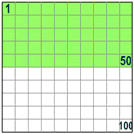 | So 50% means 50 per 100 (50% of this box is green) | And 25% means 25 per 100 (25% of this box is green) | 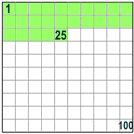 | |
Examples:
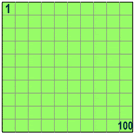 |
100% means all.
Example:
100% of 80 is 100/100 × 80 = 80
| |
 |
50% means half.
Example:
50% of 80 is 50/100 × 80 = 40
| |
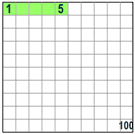 |
5% means 5/100ths.
Example:
5% of 80 is 5/100 × 80 = 4
|
Using Percent
Because "Percent" means "per 100" you should think "this should always be divided by 100"
So 75% really means 75/100
And 100% is 100/100, or exactly 1 (100% of any number is just the number, unchanged)
And 200% is 200/100, or exactly 2 (200% of any number is twice the number)
Use the slider on the left and try some different numbers (example, what is 40% of 80?)
|
A Percent can also be expressed as a Decimal or a Fraction
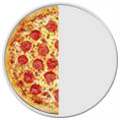 |
|
Read more about this at Decimals, Fractions and Percentages.
Some Worked Examples
Example: Calculate 25% of 80
25% = 25/100
(25/100) × 80 = 20
So 25% of 80 is 20
Example: 15% of 200 apples were bad. How many apples were bad?
15% = 15/100
(15/100) × 200 = 15 × 2 = 30 apples
30 apples were bad
Example: if only 10 of the 200 apples were bad, what percent is that?
As a fraction, 10/200 = 0.05
As a percentage it is: (10/200) x 100 = 5%
5% of those apples were bad
Example: A Skateboard is reduced 25% in price in a sale. The old price was $120. Find the new price
First, find 25% of $120:
25% = 25/100
(25/100) × $120 = $30
25% of $120 is $30
So the reduction is $30
Take the reduction from the original price
$120 - $30 = $90
The Price of the Skateboard in the sale is $90
The Word
"Percent" comes from the latin Per Centum. The latin word Centum means 100, for example a Century is 100 years.
Percent vs Percentage
My Dictionary says "Percentage" is the "result obtained by multiplying a quantity by a percent". So 10 percent of 50 apples is 5 apples: the 5 apples is the percentage.
But in practice people use both words the same way.
Decimals, Fractions and Percentages
Decimals, Fractions and Percentages are just different ways of showing the same value:
 |
| ||||||||||
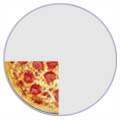 |
| ||||||||||
Here, have a play with it yourself:
Example Values
Here is a table of commonly occuring values shown in Percent, Decimal and Fraction form:
| Percent | Decimal | Fraction |
|---|---|---|
| 1% | 0.01 | 1/100 |
| 5% | 0.05 | 1/20 |
| 10% | 0.1 | 1/10 |
| 12½% | 0.125 | 1/8 |
| 20% | 0.2 | 1/5 |
| 25% | 0.25 | 1/4 |
| 331/3% | 0.333... | 1/3 |
| 50% | 0.5 | 1/2 |
| 75% | 0.75 | 3/4 |
| 80% | 0.8 | 4/5 |
| 90% | 0.9 | 9/10 |
| 99% | 0.99 | 99/100 |
| 100% | 1 | |
| 125% | 1.25 | 5/4 |
| 150% | 1.5 | 3/2 |
| 200% | 2 |
Conversions
From Percent to Decimal
To convert from percent to decimal: divide by 100, and remove the "%" sign.
The easiest way to divide by 100 is to move the decimal point 2 places to the left. So:
| From Percent | To Decimal | |
 | move the decimal point 2 places to the left, and remove the "%" sign. | |
From Decimal to Percent
To convert from decimal to percent: multiply by 100, and add a "%" sign.
The easiest way to multiply by 100 is to move the decimal point 2 places to the right. So:
| From Decimal | To Percent | |
 | move the decimal point 2 places to the right, and add the "%" sign. | |
From Fraction to Decimal
The easiest way to convert a fraction to a decimal is to divide the top number by the bottom number (divide the numerator by the denominator in mathematical language)
Example: Convert 2/5 to a decimal
Divide 2 by 5: 2 ÷ 5 = 0.4
Answer: 2/5 = 0.4
From Decimal to Fraction
To convert a decimal to a fraction needs a little more work.
Example: To convert 0.75 to a fraction
| Steps | Example |
|---|---|
| First, write down the decimal "over" the number 1 | 0.75 / 1 |
| Then multiply top and bottom by 10 for every number after the decimal point (10 for 1 number, 100 for 2 numbers, etc) | 0.75 × 100 / 1 × 100 |
| (This makes it a correctly formed fraction) | = 75 / 100 |
| Then Simplify the fraction | 3 / 4 |
From Fraction to Percentage
The easiest way to convert a fraction to a percentage is to divide the top number by the bottom number. then multiply the result by 100, and add the "%" sign.
Example: Convert 3/8 to a percentage
First divide 3 by 8: 3 ÷ 8 = 0.375,
Then multiply by 100: 0.375 x 100 = 37.5
Add the "%" sign: 37.5%
Then multiply by 100: 0.375 x 100 = 37.5
Add the "%" sign: 37.5%
Answer: 3/8 = 37.5%
From Percentage to Fraction
To convert a percentage to a fraction, first convert to a decimal (divide by 100), then use the steps for converting decimal to fractions (like above).
Example: To convert 80% to a fraction
| Steps | Example |
|---|---|
| Convert 80% to a decimal (=80/100): | 0.8 |
| Write down the decimal "over" the number 1 | 0.8 / 1 |
| Then multiply top and bottom by 10 for every number after the decimal point (10 for 1 number, 100 for 2 numbers, etc) | 0.8 × 10 / 1 × 10 |
| (This makes it a correctly formed fraction) | = 8 / 10 |
| Then Simplify the fraction | 4 / 5 |